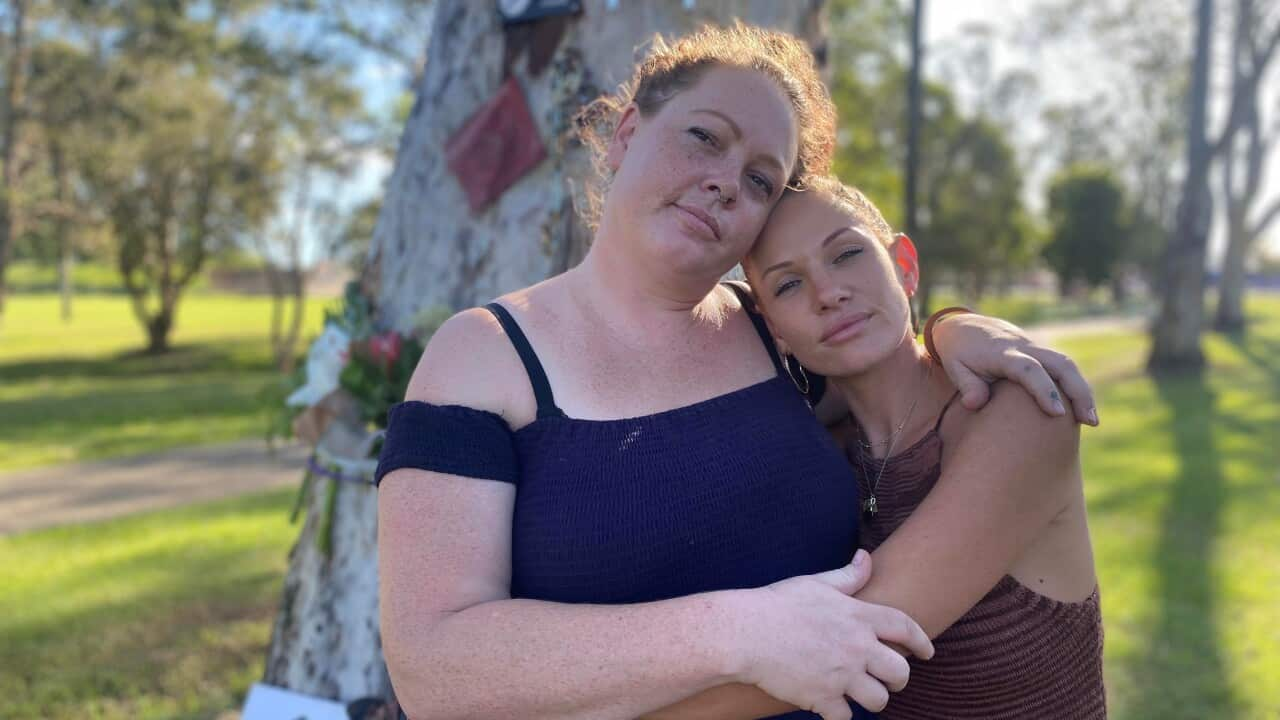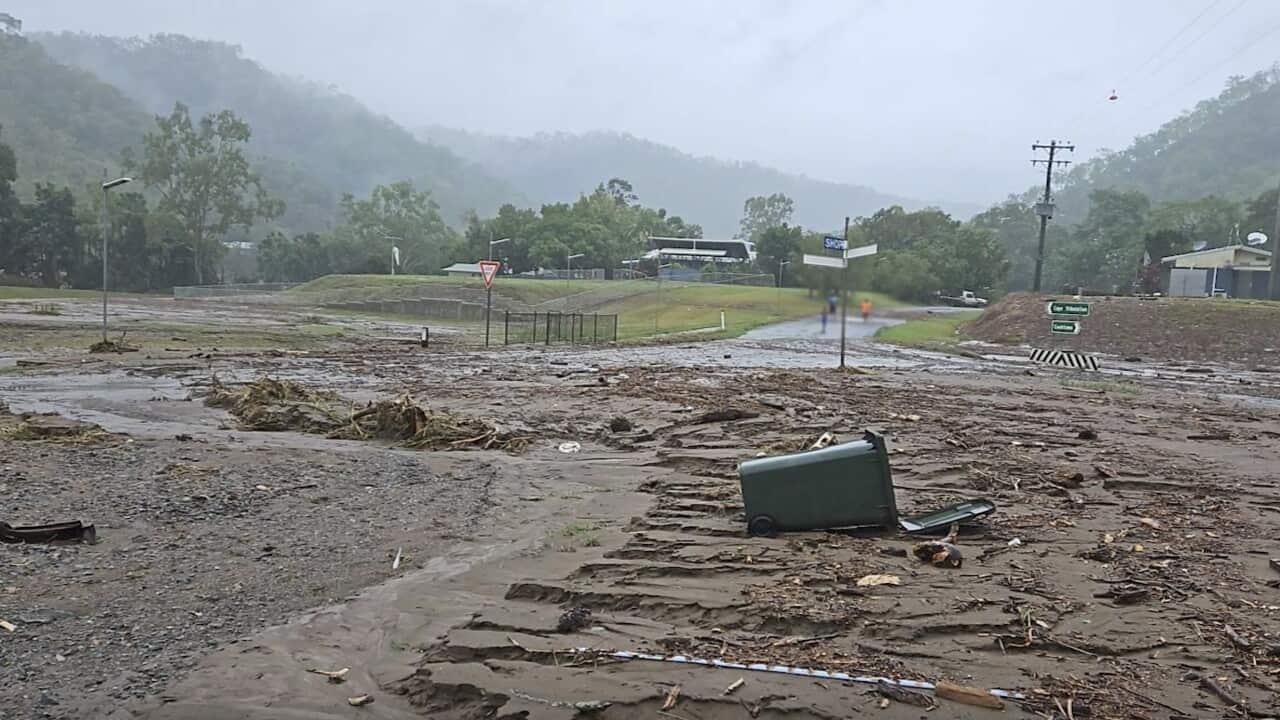When the conditions and season were right Alice Close's grandfather Lionel Donnelly used to conduct cultural burns on Githabul Country, near Muli Muli and Woodenbong.
"The police would lock him up every time he done it, every season he'd get locked up for lighting fires," the Githabul Bundjalung woman told NITV.
"He went to jail - they'd let him out the next morning."
Now, his cultural knowledge of fire is breathing life back into the landscape, and helping build Indigenous disaster resilience.
Ms Close works with the, a First Nations not-for-profit land management organisation.
On Wednesday, as part of the National Indigenous Disaster Resilience gathering in Lismore, the Jagun Alliance conducted a cultural burn at Dorrobbee Grass Reserve on Bundjalung Country near Dunoon in northern NSW.

Jagun Alliance chief executive Oliver Costello.
"This grass really needs people to come and burn it," he said.
"Our old people used to come and burn the grass to keep the pathway open.
"So today we're burning some of the grass to wake the Country up, get the young grass to come through.
"You can see the young grass from the last burn, it's really like cleaning up, like sweeping the floor."
'Disaster doesn't discriminate'

Bhiamie Williamson, lead for the National Indigenous Disaster Resilience project at Monash Uni.
The gathering was an opportunity for people to share their experiences of natural disasters, talk about what's worked, challenges and to identify solutions, while being surrounded by policy and decision makers in disaster response and recovery.
"Disaster doesn't discriminate and it affects all of us in complex ways," Mr Williamson said.
The gathering included sessions focusing on legal implications of disasters, community health services, caring for Country, the role of rangers in disaster response and cultural burning as a tool for disaster mitigation.
"We also had workshops exploring the importance of harnessing emotions and exploring notions of the spiritual resilience required to respond and bounce back from community and centering Country in that spiritual response," Mr Williamson said.
"It's been really interesting to hear about all of these different areas, different parts of the disaster pie but the most compelling thing is how they all intersect and are entwined and enmeshed and entangled with one another.
We need to have holistic conversations that recognise we can't talk about one part, we need to talk about the whole spectrum.
Key to that whole spectrum are the connections between people and groups of people.
"When a disaster hits – we see it time and time and time again – the relationships are the things that matter," Mr Williamson said.
"Where there are strong, robust relationships, you get better responses and more effective recovery quickly."
Mr Costello, too, supports the idea that strong relationships build resilience.
And fire brings people together.
"Cultural burning is critical for disaster resilience," Mr Costello said.
"When you burn, you reduce fuel and you reduce risk, but you're also connecting people to Country, and looking after the resources there, the food, the trees, the plants.
"And it's tuning into the seasons, because you can only burn at certain times because of the moisture or the dryness or the wind.
"When people are burning they're learning and being part of their environment."
Cross-cultural exchange

Joe Gilchrist, a Traditional Fire Keeper from the Secwepemc and Nlaka’pamux Nations, Canada.
In Canada colonisation also meant First Nations people were restricted from traditional practices.
"We're pretty much only allowed to do burns on the Indian reserves," Mr Gilchrist said.
"It's just beginning now, where we're able to work with the government and do cultural burns off the reserve, and I see that it's improving, and I'm quite optimistic."
Over the past decade there have been catastrophic wildfires in Canada.
"If it was done properly, then cultural burns would be reducing the fuel, improving the habitat for medicine and animals that we hunt and fish," Mr Gilchrist said.
"And the spin-off from cultural burning is wildfire mitigation and less fuel for wildfires to get big – areas that are burned have less fuel compared to areas that aren't burned.
"In the summertime, it gets super dangerous, right now, without cultural burning, the forest is really dangerous when the when the summer comes and you get really disastrous fires."
But, Mr Gilchrist believes there's hope as indigenous peoples across the world revitalise their traditional techniques of looking after the land.
"It's amazing, all across the world that battle is the same – the right thing to do isn't always the easiest thing to do," he said.
Cultural burns don't only reduce bushfire risks, they also help with ecosystem regeneration and reduce erosion and landslides, meaning they help mitigate damage during times of flood too.
As well as preparedness for natural disasters the gathering has been discussing recovery.
In early 2022 Bundjalung Country was smashed by catastrophic floods.
"Lismore is a perfect example, this is still a community in repair, this is still a community in recovery," Mr Williamson said.
"There's healing to be had by sharing our stories with people who we feel safe to share them with, and this gathering is about creating that safety, providing the opportunity for storytelling and for reflection."
Mr Williamson believes the revival of cultural burns is a genuine good news story, particularly as the practice expands and Country begins to heal and it helps with disaster mitigation.
"It's something we can be proud of as a nation and as Aboriginal people," he said.
"Fire and flood do go together.
"People burn on wetlands, it's a real, important tool.
"Fire is a way to manage waterways, to make sure that the water is clean, it's reliable, and it enhances aquatic ecosystems.
"We've also heard wonderful examples of river restoration, of caring for Country and restoring wetlands, which are like, big sponges in the landscape."
As the climate changes across the planet, it is predicted that will create more frequent and intense natural disasters.
"This is a land of cyclones, it's a land of heat waves, it's a land of fire, it's a land of flood," Mr Williamson said.
"They are as a part of this country as we are.
"But it's changing, that is very clear and it's something people are widely acknowledging.
"The Country and our communities are being hit harder than ever and more frequently than ever and we need immediate responses, and we need to be adaptive, and we need to be active, and we need to be prepared, because things are going to get worse."
Bundjalung men Ashley Moran and Murray Roberts – who lit the fire at Dorrobbee Grass Reserve – said it was an honour to have the first National Indigenous Disaster Resilience gathering on their Country.
"It's been an opportunity for many clan groups across the Bundjalung nation to come out and share their experiences and some of the work that they're doing within their communities, but also talk about some of the issues that they faced during those periods of time when we had the flooding in the Northern Rivers area, especially in Lismore," Mr Moran said.
"It's an opportunity to have face to face discussions about how things could probably work better in regards to the appropriate services for Aboriginal community groups that are in remote communities across Bundjalung Country."

Githabul Bundjalung woman Alice Close is continuing her grandfather's work.
"He never had the chance to pass his knowledge on because it wasn't allowed, we got taught the Bible," she said.
"I wish I'd listened back in the day, but I got taught Sunday school next door.
"I'm doing my grandfather's work."












